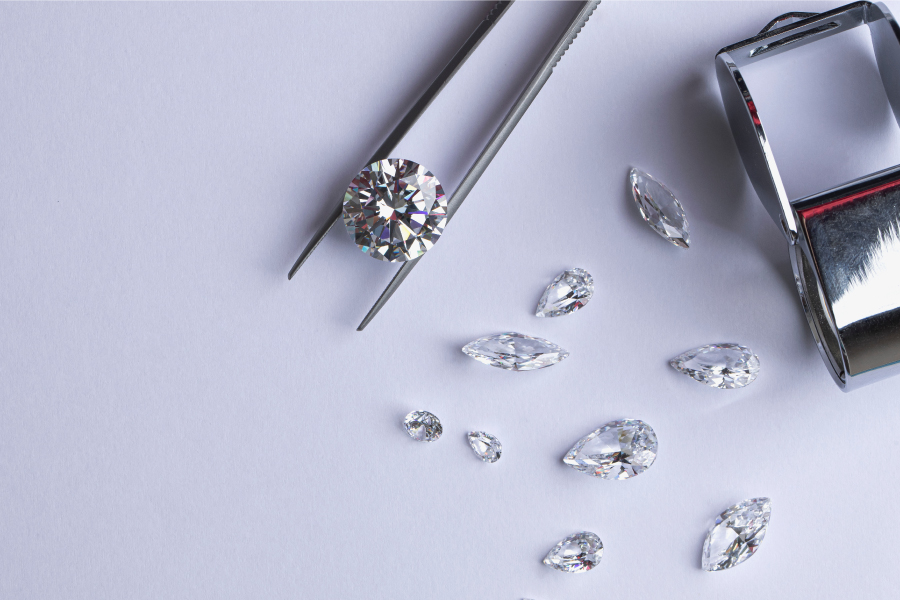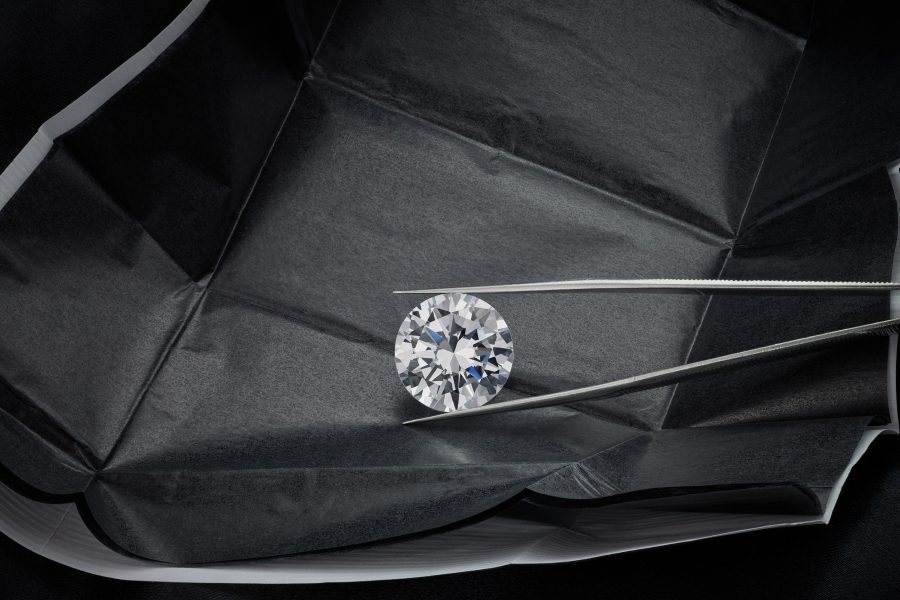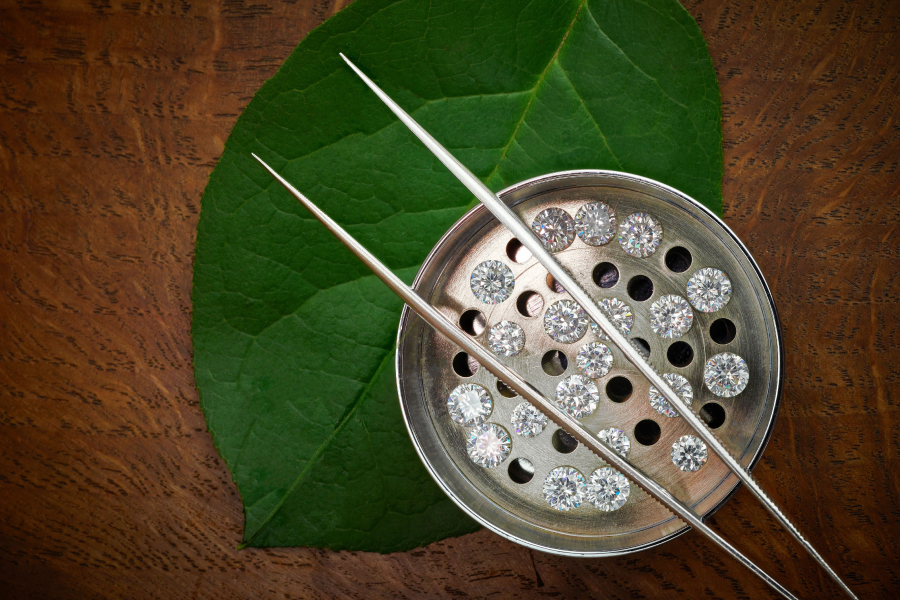The Definitive Guide To Understanding Facet Counts And Their Meaning
Introduction: What is a Diamond?
Diamonds are one of the most precious and rarest gemstones in the world. Diamonds are formed by extreme pressure and heat deep within the Earth's crust. They are made of pure carbon, which is why they have a hardness of 10 on the Mohs scale.
Diamonds come from deep within Earth's surface, usually from a depth of 100 to 150 miles below the surface. The diamonds form as a result of intense heat and pressure that forces carbon atoms together.
Diamonds are made up of carbon atoms that are arranged in a tetrahedral lattice. Diamonds can be found all over the world, but the most famous diamond mines are located in South Africa. These mines have been producing diamonds for more than 100 years, and they still account for about one-third of the world's production.
What Are Facets?
Facets are the flat surfaces that form a diamond's external shape.
They are essential because they determine the diamond's brilliance, fire and scintillation. A diamond with many facets will show more light and sparkle than one with fewer facets. This is why it is important to consider how many facets a diamond has when purchasing one.
The crown facet is the most important diamond facet because it is its centre. Its brightness and shape determine the diamond's brilliance. If a diamond has a poor quality crown, it will not be as brilliant and will look less like a diamond. A loose table makes for an inaccurate appraisal of this facet.
A good quality diamond should have no bubbles or inclusions of any kind. It is important because it determines the diamond's fire and scintillation. The table facet is the flat surface that is opposite the crown facet.
If a diamond has a poor quality table, it will not be as brilliant and will look less like a diamond. A loose table makes for an inaccurate appraisal of this facet.
Types of Diamond
Diamonds are a natural resource. They are made of carbon, which is the chemical element that makes up most of Earth's crust. Diamonds are also one of the hardest substances on Earth, so to cut them into different shapes and sizes, they must be heated to very high temperatures.
There are three main types of diamonds: gem-quality stones, industrial quality stones and synthetic diamonds. Gem quality diamonds come from mines in Africa and South America, while industrial quality diamonds come from mines in Canada and Russia. Synthetic diamonds, they can be made in a lab by combining carbon with other materials such as hydrogen or methane gas under high pressure and temperature conditions.
Gem Quality Stone
Gem quality stone diamonds are rare diamonds that come with high clarity and colour. These diamonds are cut from the top of the diamond ore and can be easily identified by experts.
Industrial Quality Stone
Industrial quality stones are important in a variety of industries such as construction, architecture and engineering. These stones are used to make countertops, flooring, patios and more. They are durable and long-lasting and will not crack or break when exposed to the elements.
Synthetic Diamonds
Synthetic diamonds are laboratory-created diamonds that have the same chemical composition as natural diamonds.
The process starts with a small seed diamond, which is then placed inside a device called a diamond anvil. The seed diamond is heated to extremely high temperatures and subjected to high pressure until it melts and recrystallises into a synthetic diamond.
Synthetic diamonds are often used in diamond jewellery because they are much cheaper than natural ones.

Diamonds in different shapes
Properties of a Diamond
Clarity
Diamonds come in many different shapes and sizes, but they all have one thing in common: they are made up of carbon atoms arranged in a crystal structure called diamond cubic. This means that they have a specific level of diamond clarity that determines how much light can pass through them.
Diamond clarity depends on the number and size of the tiny flaws that interrupt this light passage, such as scratches or bubbles. Diamonds with numerous flaws are said to be 'included', either meaning that the diamond has visible inclusions of different colours or that the diamond is not completely clear. Diamonds with no flaws at all are said to be 'flaw less' or 'excellent'.
Colour
Diamond colour is one of the most important factors in determining the value of a diamond. Diamonds are usually graded on a scale from D (colourless) to Z (tends to be yellow or brown).
A person can buy a diamond with any colour grade, and it will be worth something. The price will depend on how much that person is willing to spend, but the more colourless, the higher the diamond price.
Carat
Carat is the weight of a diamond, and diamonds are priced according to their carat weight.
The word carat comes from the ancient Greek word keration, meaning "carob seed" or "carob fruit".
A carat is a unit of mass equal to 1/5th of a gram, or 200 milligrams.
A carat also equals 0.2 ounces or 7 grams.
The symbol for the carat is ct.
Cut
Diamond cutting is one of the most important factors in determining its value.
The cut of a diamond is determined by the angles and proportions at which the stone has been cut. The cut is also a term that describes how well polished the surface of a gemstone is. It can be used to describe other objects as well, such as glass or metal.
The brilliance and fire that are seen in diamonds are due to light reflecting off their surfaces at different angles. The more facets on a diamond, the more light will bounce off it and create these effects.
Some of the most famous cuts are old European cut, cushion cut, emerald cut, radiant cut, old mine cut, rose cut, and many more.
Shape
The diamond shape is the most important factor in determining its value. The shape determines how light travels through the stone and what kind of sparkle it has.
Diamonds are traditionally categorised into four main shapes: Round, Princess, Oval and Marquise.
Round diamonds are the most popular choice as they have a classic appeal and are considered to be an all-around perfect diamond shape. They are often used as an engagement ring or as a necklace pendant.
Princess cut diamonds have a square outline with pointed corners on one or both ends, which makes them resemble a four-sided pyramid with the top cut off. These diamonds are often used for earrings, pendants or rings because they're small enough to be worn on the finger but large enough to show off.
Brilliance
Diamonds are one of the most valuable and sought after gems on earth. But how do you know if a diamond is genuine? The brilliance in a diamond is what makes it stand out, especially in comparison to other less expensive diamonds.
Sparkle
There are many different colours that diamonds can have, but there is only one colour that is considered to be the most valuable - sparkle.
The importance of sparkle in a diamond cannot be overstated, and it is what makes a diamond valuable. The more sparkle, the more valuable a diamond becomes. Diamonds that do not have any sparkle will not be worth as much as diamonds with lots of it.
Crown
Diamonds are the most popular gem because they are beautiful and timeless. But there is more to diamonds than just how they look. There is a certain way that diamonds are cut or sculpted, and this process is called the crown.
The crown of a diamond is the middle section of its top surface. It can be defined as either small cutouts around a diamond's top perimeter, called table-top cuts, or larger, more elaborate cutouts, called gallery-top cuts.
This process defines the height and width of the top surface of a diamond. The crown is essential to how the diamond is classified and graded by gemologists. Smaller table-top and gallery-top cuts tend to be high in value, whereas large table-top or gallery-top cuts tend to be low value.
Facets
Facets are important in a diamond because they help to determine the quality and value of the stone.
Facets are the flat surfaces that intersect with each other to form a diamond's shape. They are an indication of how well cut the diamond is and can help determine the value and quality of a stone.
A well-cut diamond will have many more facets than one that is poorly cut, so it will be more expensive and will have a higher clarity grade.

round Diamond
How Many Facets In A Round Diamond
The number of facets in a round diamond is determined by the cut and the shape of the diamond. The most common round brilliant cut has 58 facets but can range from as few as 32 to as many as 68.
Round diamonds are usually classified into three categories: Ideal, Good and Poor. The quality of a round diamond is determined by how well it reflects light and how evenly its colour is distributed.
Round Cut Against Other Types of Cuts
Round Cut vs Princess Cut
What is the difference between a round cut diamond and a princess cut diamond? Round cuts are more affordable, and they also look better on a wider diamond ring. They are also easier to set because they have an octagonal shape that allows them to lay flat. A princess cut diamond is more expensive, but it will sparkle more brightly and has a more glamorous aura than a round cut diamond.
Round Cut vs Asscher Cut
Round diamond cuts are the most popular shapes and are available in a wide range of sizes.
Asscher cut diamonds have square corners, which makes them noticeable and unique.
Round cut diamonds are more affordable than Asscher cut diamonds because they require less time to make.
Round Cut vs Radiant Cut
Round cut diamonds have a more traditional look, which is why they are often preferred for an engagement ring. Radiant cut diamonds have a more modern look, so they are often chosen for wedding bands.
The difference between round and radiant cuts is the shape of the diamond's facets. Round cut diamonds have faceted sides that produce a symmetrical, circular pattern on the diamond's surface. The facets on radiant-cut diamonds are triangular or rectangular in shape, so the pattern created by their facets resembles that of a starburst.







